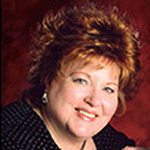Feb. 1, 2016
 As a member of a winning high school debate team from Ohio, Joan Parsons, R.T.(R) looked forward to becoming a lawyer by funding her college tuition as a radiographer.
As a member of a winning high school debate team from Ohio, Joan Parsons, R.T.(R) looked forward to becoming a lawyer by funding her college tuition as a radiographer.
“My mom didn’t have money to send me to school,” Joan recalls. “She was working at a factory job, supporting two kids who were in high school and me, because I was still at home.”
Little did she know that what started out as a way to pay for law school would turn into a passionate career in the radiologic sciences.
A Bus, a Car and a Career
After graduating from high school, Joan Parsons attended Kent State University and entered x-ray school in a hospital 30 miles from her home. The $50 monthly stipend she received the first year went to bus fare, and she slept in the on-call room of the hospital every seventh week because her shift ran from 3 to 11:30 and the last bus left at 11 p.m. In her second year, a 1954 Oldsmobile 88 that Joan’s grandfather gave her and an increase in the stipend to $100 gave her greater mobility and money to eat lunch with a friend occasionally.
“My first desire, really, in going into x-ray is that I always wanted to be a lawyer,” Joan says. “Then I got involved in the profession by joining and volunteering in the district, state and national societies. I thought, I really like this profession; I don’t want to become a lawyer.”
After graduating from the x-ray program, Joan changed her Kent State major to education and balanced a hospital job with university classes to earn a bachelor’s degree.
The Career and a Way of Life
Joan served as an officer for the Akron, Canton and Ohio professional societies. In time, she was elected as the Region 7 director for the ASRT and sat in the first House of Delegates before serving as president and chairman for the national organization.
She advanced quickly from staff technologist to helping set up a nuclear medicine department, and then became chief technologist and administrative director. Joan even used her years at Kent State toward a position as the program’s first director.
“It just happened so naturally. It just all flowed. I couldn’t think of doing anything else,” Joan says. “I’ve done this for over 50 years. What type of person stays in a profession for 50 years and doesn’t care about it or want to do something for it? That concept is so foreign to me. What would we do if it weren’t for all these people volunteering?”
Working for Pay and To Serve
Joan recalls her mother working 12 or more hours a day in a factory to support and her younger brother and sister. As a family headed by a single mother in the 1950’s, they faced prejudice but also built resilience.
“We were bullied because even teachers in those days were prejudiced against single moms,” says Joan.
These challenges only brought them closer, and instilled in their family a deep sense of compassion and a commitment to serving others. “My mother’s belief was that you gave, and if you didn’t give, then you didn’t receive.”
Giving to the Profession
Joan recognizes the support needed to keep the profession moving forward. That’s why she has made general gifts to the ASRT Foundation for many years and has now made a generous commitment to the Foundation’s operating endowment.
“I can help people to get an education and help ASRT by donating money for the Foundation’s administrative costs,” Joan says about giving to the endowment. “So many times we forget what the costs of these programs are.”
Early in 2013, Joan was updating her will when the lawyers asked whether she wanted to bequeath to any group or organization in particular. She told them she wanted to give to her profession because it’s given so much to her. "If I have money to bequeath, it will go to the ASRT Foundation to support the profession I have so loved," she says.
“When you say to me, ‘Why give?’ I say, ‘Why not?’ 'Why be so passionate about the profession?' 'Why not?'”